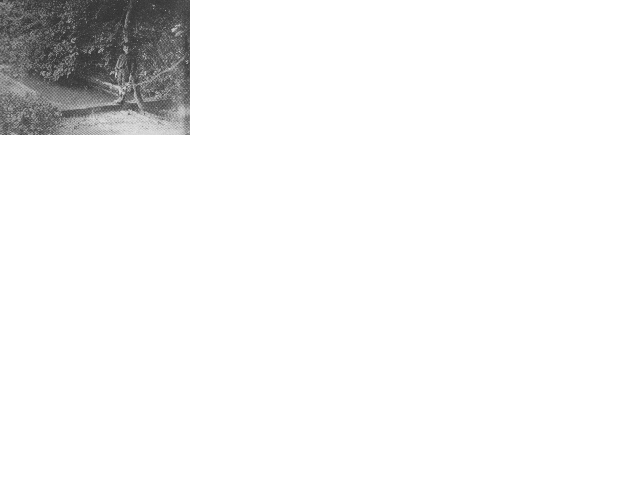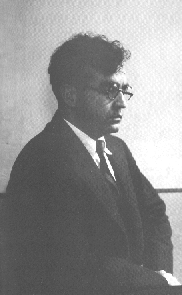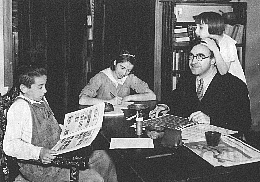During the 1910 Revolution, all schoolteachers were ordered to leave Mexico City, so Carlos and his family relocated to Veracruz. On a trip to Mexico City when he was 16, Carlos was narrowly missed by a stray bullet during a skirmish between the warring factions. Nevertheless, the family survived these difficult times, and at the end of hostilities they settled again in Mexico’s capital city.
Carlos began taking piano lessons from his brother Manuel at age nine and studied briefly with Asunción Parra. But in 1910 he became a student of Mexico’s leading composer of the time, Manuel Ponce. Five years later he met the man whom Carlos would say developed his musical formation, Pedro Luis Ogazón. (It was Ogazón who first introduced Debussy’s music to Mexico in 1903.) Through Ogazón, Chávez was largely influenced by the harmony theory of Juan Fuentes.
Chávez began composing shortly after beginning his piano studies. He wrote several simple pieces and was adept at improvisation at the keyboard. At age 12 he
assiduously devoured Albert Guiraud’s Traité d'Instrumentation et Orchestration and through it learned to read and study the orchestral scores of the masters. He began composing his first symphony three years later, even though at the time he had heard a symphony orchestra only once. The symphony was completed in 1918 (Sinfonía para orquesta).
Largely self-taught, Chávez never attempted to become a disciple of another composer but relied instead on his own analysis of the works of the masters. He did, however, complete his formal studies at the National Conservatory and received his diploma in composition. In 1920, the firm Wagner y Levien in Mexico City published some of his early piano music, and the stage was set for his revelations to the world.
The first public concert of Chávez’s music occurred in 1921, which included his Sextet for Strings and Piano. The performance was well received, and the new revolutionary governemnt shortly thereafter commissioned Chávez to compose a ballet based on ancient Aztec themes. In El Fuego Nuevo, Chávez incorporated many indigenous Indian themes he recalled from his early years to create a distinctively sonorous orchestral work of seminal import to his future compositions. Unfortunately, the work was turned down by Julián Carillo, director of the Orquesta Sinfónica, and it remaind unperformed until 1928 when it was premiered by the Orquesta Sinfónica de México under the baton of Chávez himself.
In 1922 Carlos married Otilia Ortiz, a fellow student of Luis Ogazón and an accomplished pianist in her own right. Together she and Carlos toured Europe and endeavored to promote Chávez’s musical compositions. His Second Piano Sonata was accepted for publication by the Berlin firm of Bote und Bock, and his name began to be recognized outside his home country.
While in Paris, Chávez befriended composer Paul Dukas who encouraged him to concentrate on the rich musical heritage of Mexico, just as de Falla had done with Spanish music and Bartók and Kodaly with the folk music of Hungary. Returning to Mexico for the birth of his first child Anita, Carlos began organizing concerts of contemporary music at the National Preparatory School and promoted many works never before heard in Mexico. Among the composers whose works were performed were Bartók, Honegger, Milhaud, Poulenc, Satie, Schoenberg, Stravinsky, and Varèse — as well as compositions by Chávez himself.
The public reception of these concerts was only lukewarm, however, and so Chávez decided to travel to New York, which he had visited briefly after the birth of Anita. Leaving behind his wife, daughter, and newborn son Agustín, he ventured to America with Mexican painter Rufino Tamayo, with whom he shared a flat in Greenwich Village. Chávez soon befriended both Aaron Copland and Edgard Varèse who assisted him in becoming introduced to the musical shakers of the time. His works began to be heard at last, and they received favorable reviews.
Having finally achieved his well-deserved acclaim, Chávez returned to Mexico in 1928 to accept the post of musical director of the Orquesta Sinfónica Mexicana. Reorganized under his leadership, the orchestra changed its name the following year to the Orquesta Sinfónica de México and became the first stable orchestra in Mexico’s history, flourishing for 21 seasons under Chávez’s directorship. He also was appointed director of the Conservatorio Nacional where he taught composition and inspired a new generation of Mexican composers, among them Candelario Huizar, Silvestre Revueltas, Daniel Ayala, Blas Galindo, Salvador Contreras, and José Moncayo.




